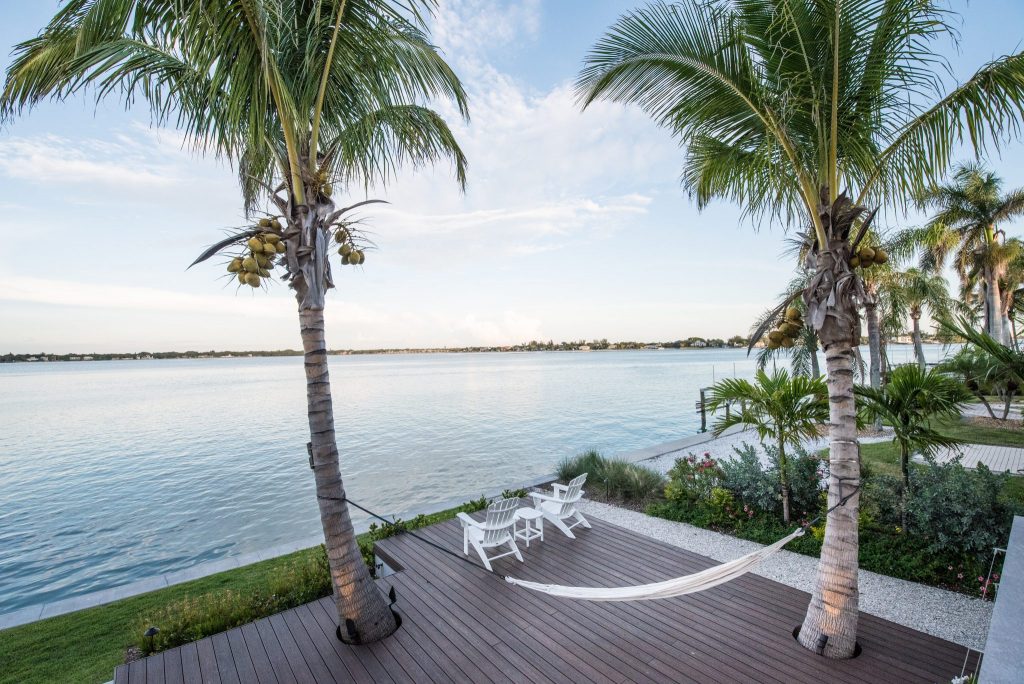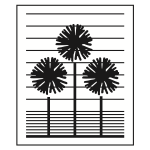Supporting Healthy Waterways

A healthy Sarasota Bay, June 2018
We join the rest of Southwest Florida in deep concern for our beaches and waterways as they recover from the worst outbreak of Red Tide (Karenia brevis) in recent history. The usually mild toxic effects of the algae bloom were further compounded by the overflow of Cyanobacteria from Lake Okechobee. The double threat has caused substantial damage to our sea life, the health of our beaches, our tourism-driven economy, and our wellbeing as a community.
These events have also served to raise awareness about agricultural operations that are directly contributing to toxicity in our waterways. While most of these measures are causing damage on a much larger scale, single-family residential practices are being called into question as well. We can all be part of the solution. We’d like to take this opportunity to inform our clients, families and friends about the steps we are taking to ensure that our landscapes are as environmentally responsible as possible.
FERTILIZATION
Fertilizers contain nitrogen, which plants need for healthy growth; yet fertilizers are among the most prolific pollutants that spur overabundant algae blooms. Too much nitrogen, applied too quickly or at the wrong time, can be disastrous. It is critical that we use best management practices to minimize harmful chemical runoff while maximizing healthy nutrient intake for our landscapes. We do this in several ways. First, we do not use fertilizers during summer months, when heavy rains can wash them into our creeks and bays. Instead, we use only micro-nutrients during the summer, which do not contribute to algae growth. Furthermore, when we do fertilize, we exclusively use slow-release products. These agents release nutrients into the soil over an extended period of time, so that if there is an unexpected rain, we aren’t blasting our waterways with an entire application of nitrogen.
LANDSCAPE MATERIALS
The need for fertilizer is directly proportional to the suitability of the plants in the landscape. Plants that are happy to be where they are require less encouragement to thrive. Our landscape architects use a palette rich in native and Florida Friendly plants, proven in our climate and conditions. We use compost rich soil and nutrient heavy mulch, also minimizing the need for additives. And our maintenance team uses best practices in mowing and trimming to protect plants from unnecessary fungus, diseases, and pests that can occur when exposure makes them vulnerable.
IRRIGATION
Our irrigation systems are designed to drip slowly and work with Mother Nature. When we do fertilize, we program our irrigation timers accordingly to ensure that the products we use are not washed away. We monitor our systems carefully to make sure that any leaks or breaks that occur are remedied immediately. And, most importantly, we use a predominantly drought tolerant palette that requires as little additional water from irrigation as possible.
The most important measure we take at Michael A. Gilkey, Inc. to be a steward of the environment is to approach each landscape uniquely. No two fertilization schedules are the same, no two irrigation clocks are set identically. We use the minimum amount of water and fertilizer necessary to keep plants healthy, and we do so based on the recommendations of our area’s foremost environmental experts.
Here are some local resources you can use to learn more about the health of our waterways, and how you can become involved in their protection:
Water health updates:
http://myfwc.com/redtidestatus
https://www.scgov.net/government/parks-recreation-and-natural-resources/find-a-park/beaches/red-tide-status
http://ourgulfenvironment.net
Volunteer opportunities:
http://www.myfwc.com/research/redtide/monitoring/current/offshore-monitoring
https://www.scgov.net/government/human-resources/volunteer
